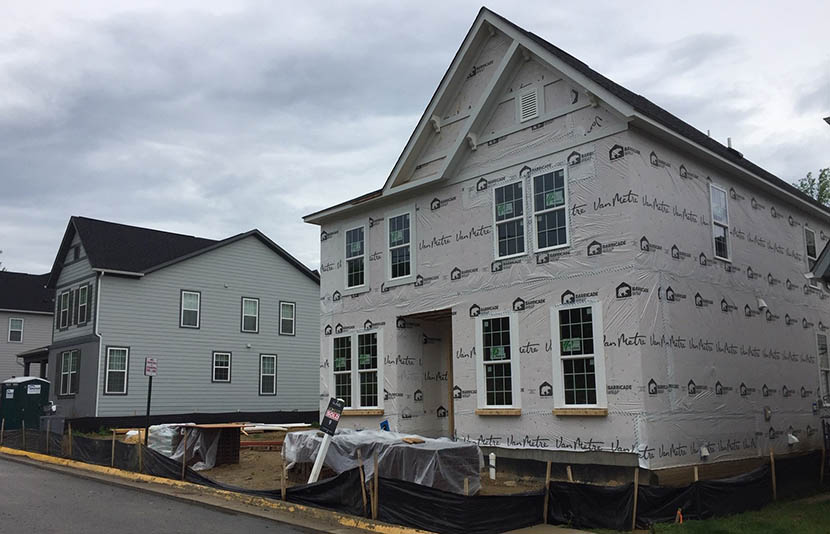
August New Home Sales Continue Summer Surge

New home sales topped the one million mark, seasonally adjusted, in August for the first time since 2006, HUD and the Census Bureau reported yesterday.
The report said sales of new single-family houses in August rose to a seasonally adjusted annual rate of 1.011 million, 4.8 percent above the revised July rate of 965,000 and 43.2 percent higher than a year ago (706,000).
Regionally, results were mixed but buoyed by a strong performance in the largest region, the South, where sales jumped by 13.4 percent, seasonally annually adjusted, to 636,000 units in August from 561,000 units in July and improved by 50 percent from a year ago. In the Northeast, sales rose by 5 percent in August to 42,000 units from 40,000 units in July and improved by 27.3 percent from a year ago
The South’s performance more than offset declines in the West and Midwest. In the West sales fell by 1.7 percent, seasonally annually adjusted, to 234,000 units in August from 238,000 units in July but improved by 26.5 percent from a year ago. In the Midwest sales fell by 21.4 percent to 99,000 units in August from 126,000 units in July but improved by nearly 55 percent from a year ago.
Mark Vitner, Senior Economist with Wells Fargo Securities, Charlotte, N.C., said new home sales continue to show “real movement.”
“This marks the first time since November 2006 that the pace of new home sales topped 1-million units and is the strongest pace since September 2006,” Vitner said. “Moreover, sales were revised sharply higher for the prior month and have averaged a 939,000unit pace over the past three months. Today’s eye-popping numbers validate the earlier reported surge in homebuilder confidence, which hit an all-time high of 83 in September, suggesting sales remained strong this past month.”
“In today’s housing market, if you build it, they will buy it,” said Odeta Kushi, Deputy Chief Economist with First American Financial Corp., Santa Ana, Calif. “The accelerated pace is no surprise, given the growing demand for homes and lack of existing homes for sale.”
Kushi said looking ahead, there are two possible constraints to new home sales. “On the demand side, the potential for increasing layoffs may impact potential home buyers,” she said. “Buying a home is typically the largest financial decision a person will make, and that is predicated on strong consumer confidence and job stability. On the supply side, new home sales are largely dependent on the amount of new construction being built. Supply-side headwinds, particularly high lumber costs, could constrain builder momentum.”
For the near future, Kushi noted mortgage rates are anticipated to remain low and the labor market decline has thus far disproportionately hurt younger, lower-wage renters, keeping home-buying demand robust. “Similarly, builder confidence reached new highs in September and the inventory of new homes for sale is at a three-year low, which should support increased construction in the months to come,” she said.
Doug Duncan, Chief Economist with Fannie Mae, Washington, D.C., said the report whowed housing continues along a ‘V-shaped’ recovery. “While we believe the COVID-19-related delay in the spring homebuying season is likely continuing to shift purchases to later in the year, recent sales have more than made up for the spring slowdown,” he said. “We believe low mortgage rates, limited availability of existing homes available for sale, and what appears to be increased homebuyer interest in suburban areas in some metros are fueling demand for new home construction.”
However, Duncan said Fannie Mae expects the strong pace of sales to cool, given the relatively slower pace of construction, despite starts’ recent impressive growth.
The report said the median sales price of new houses sold in August was $312,800; the average sales price was $369,000. The seasonally adjusted estimate of new houses for sale at the end of August fell to 82,000, representing a supply of just 3.3 months at the current sales rate.
“The surge in new home sales has cut significantly into the supply of new homes available for sale,” Vitner said. “Homebuilders are clearly selling homes faster than they can build them. All of the decline in inventories occurred among homes already completed or currently under construction. Inventory of not-yet-started homes rose slightly, suggesting that builders are scrambling to secure more lots and open new communities.”
